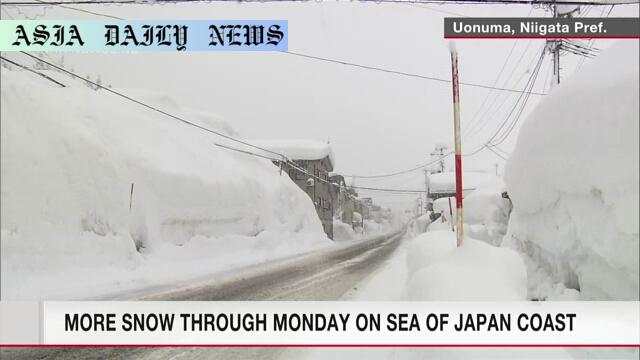Snowfall continues to affect wide areas of Japan, bringing heavy disruptions and risks in Niigata, Hokuriku, Chugoku, and more regions.
Snowfall continues to disrupt broad areas of Japan due to a cold air mass.
Niigata saw snow accumulation of 3.81 meters at one location.
Authorities forecast additional snowfall of up to 30 cm in localized regions.
Risks include avalanches, traffic disruptions, power outages, and falling snow.

Snowfall Disrupts Broad Areas of Japan
Prolonged and severe snowfall is currently affecting numerous areas of Japan, bringing widespread disruption and heightened risks. As per the Japan Meteorological Agency, this weather phenomenon is primarily caused by a strong cold air mass influencing the Tohoku, Hokuriku, and Chugoku regions along the Sea of Japan. Heavy snowfall has raised concern for public safety and has already caused considerable impacts in these areas.
Snow Accumulations Break Records
As of Monday morning, snow accumulation reports have been staggering. Uonuma City in Niigata Prefecture has recorded an astonishing 3.81 meters of snow, one of the highest accumulations in recent memory. Ohkura Village in Yamagata Prefecture follows closely with 3.29 meters, while Aomori City in Aomori Prefecture has experienced 1.43 meters of snow. These numbers highlight the intensity and scale of this weather event.
Further Snowfall Forecasted
Despite expectations for an overall easing of conditions, localized regions are likely to continue experiencing heavy snow. Areas like the Kinki, Chugoku, and Shikoku regions may see snowfall intensify in some spots. Projections for the 24-hour period through Tuesday morning indicate snow accumulation could reach up to 30 centimeters in Niigata Prefecture, Hokuriku, Chugoku, and Kinki regions. Shikoku could see up to 20 centimeters of snowfall in the same period.
Impact on Daily Lives
The heavy snow continues to pose serious risks, particularly concerning travel and infrastructure. Authorities have issued warnings about potential traffic disruptions caused by icy road conditions and reduced visibility. Additionally, the weight of accumulated snow could result in avalanches, falling snow from roofs, power outages, and even fallen trees obstructing roads. Residents across affected areas are advised to exercise caution and take necessary preparations to ensure their safety.
Precautions and Safety Guidelines
Authorities are urging the public to be vigilant during this time of extreme weather. Motorists are advised to avoid unnecessary travel, use snow tires and chains when driving, and remain informed of weather updates. Pedestrians are also cautioned to be wary of snow falling from rooftops or icy pavements, which increase the risk of accidents. Ensuring adequate heating and supplies at home during potential power outages has also been advised.
Conclusion
The ongoing snowfall is a stark reminder of nature’s power and the formidable challenges of winter conditions in Japan. From extensive snow accumulations to the risks it poses to infrastructure and daily life, this weather event highlights the importance of preparedness and community resilience. Authorities and residents are responding cautiously, with the hope that conditions will soon improve. Nonetheless, continued vigilance is essential to avoid significant losses or tragedies during this challenging time.
Commentary
Understanding the Impact of Snowfall in Japan
Snowfall in Japan, particularly of the scale being witnessed now, reminds us of the unique challenges faced by regions prone to extreme winter weather. Heavy snow is a double-edged sword—it creates picturesque landscapes but also brings tremendous disruptions to daily life. Niigata’s 3.81-meter snow accumulation is a staggering testament to the severity of this weather event. As many parts of Japan grapple with these disruptions, it is crucial to prioritize safety and readiness.
Lessons on Preparedness
One recurring theme during extreme weather events is the importance of preparedness. Traffic disruptions due to icy conditions highlight the need for snow tires and chains, while power outages remind us to keep emergency supplies at the ready. These challenges underscore the resilience required by citizens in affected areas. It’s commendable to see Japanese authorities emphasizing safety with regular advisories and alerts, showcasing proactive crisis management.
Community Resilience Amid Extreme Weather
Despite the risks, events like this also demonstrate the strength and cohesion of communities. Volunteers often step in to help clear snow or check on vulnerable neighbors. People band together to adapt to these harsh conditions. Such resilience reflects not only the people’s spirit but also their underlying respect for the power of nature. It’s a poignant reminder of the interconnectedness and cooperation needed to overcome challenging times.


